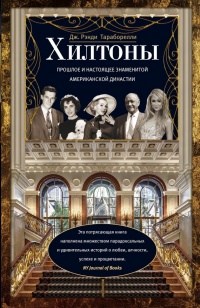Читать книгу "Возбуждённые: таинственная история эндокринологии. Властные гормоны, которые контролируют всю нашу жизнь (и даже больше) - Рэнди Хаттер Эпштейн"
Шрифт:
Интервал:
Закладка:
1. Michael A. Kozminski and David A. Bloom, “A Brief History of Rejuvenation Operations,” Journal of Urology 187, no. 3 (2012): 1130–1134.
2. “Paris Scientist: Tells of Gland Experiments,” Los Angeles Times, June 5, 1923; “New Ponce De Leon Coming,” Baltimore Sun, September 16, 1923; “Gland Treatment Spreads in America,” New York Times, April 8, 1923; “Display Ad 205—No Title,” Los Angeles Times, June 5, 1923.
3. Hans Lisser to Dr. Cushing, July 19, 1921, in Yale University Medical School archives, HC Reprints X, no. 156.
4. См. https://www.nobelprize.org/nomination/archive/show_people.php?id=95692.
5. Kozminski and Bloom, “A Brief History of Rejuvenation Operations.” Обоснование процедуры Штейнаха также дается в E. Steinach, “Biological Methods Against the Process of Old Age,” Medical Journal and Record 125, no. 2345 (1927): 78–81, 161–164.
6. Steinach and Loebel, Sex and Life, 49.
7. Там же, 70.
8. “Elixir of Life: The Brown-Séquard Discovery,” Te Aroha and Ohinemu News and Upper Thames Advocate, September 15, 1889.
9. Chandak Sengoopta, “Glandular Politics: Experimental Biology, Clinical Medicine, and Homosexual Emancipationin Fin-de-Siecle Central Europe,” Isis 89 (1998): 445–473; Chandak Sengoopta, “‘Dr Steinach coming to make old young!’: Sex Glands, Vasectomy and the Quest for Rejuvenation in the Roaring Twenties,” Endeavour 27, no. 3 (2003): 122–126.
10. Steinach and Loebel, Sex and Life, 216.
11. Drowne and Huber, The 1920s; Michael Pettit, “Becoming Glandular: Endocrinology, Mass Culture, and Experimental Lives in the Interwar Age,” American Historical Review 118, no. 4 (2013): 1052–1076.
12. Pettit, “Becoming Glandular.”
13. Laura Davidow Hirschbein, “The Glandular Solution: Sex, Masculinity, and Aging in the 1920s,” Journal of the History of Sexuality 9, no. 3 (2000): 277–304.
14. Sengoopta, The Most Secret Quintessence of Life, 57.
15. Steinach and Loebel, Sex and Life, 37.
16. Там же, 16.
17. Там же, 39.
18. Per Sodersten et al., “Eugen Steinach: The First Neuroendocrinologist,” Endocrinology 155, no. 3 (2014).
19. Steinach and Loebel, Sex and Life, 30.
20. Там же, 48.
21. Там же, 89.
22. Штейнах назвал одну из глав книги Sex and Life «Эксперименты по объяснению и эротизации». В ней он писал: «Я изобрел выражение “эротизация центральной нервной системы, или эротизация”» (30).
23. Там же, 89, 94.
24. Christopher Turner, “Vasectomania, and other Cures for Sloth,” Cabinet, Spring 2008.
25. Sengoopta, The Most Secret Quintessence of Life, 80.
26. Kozminski and Bloom, “A Brief History of Rejuvenation Operations.”
27. Stephen Lock, “‘O That I Were Young Again’: Yeats and the Steinach Operation,” British Medical Journal (Clinical Research Edition) 287, no. 6409 (1983): 1964–1968.
28. Steinach and Loebel, Sex and Life, 178.
29. “Gland Treatment Spreads in America,” New York Times, April 8, 1923; “New Ponce De Leon Coming,” Baltimore Sun, September 16, 1923.
30. Van Buren Thorne, “The Craze for Rejuvenation,” New York Times, June 4, 1922.
31. Morris Fishbein, Fads and Quackery in Healing: An Analysis of the Foibles of the Healing Cults, With Essays on Various Other Peculiar Notions in the Health Field (New York: Covici, Friede, 1932).
32. Angus McLaren, Reproduction by Design (Chicago: University of Chicago Press, 2012), 85–86; Van Buren Thorne, “Dr. Steinach and Rejuvenation,” New York Times, June 26, 1921.
33. McLaren, Reproduction by Design, 86.
34. Sodersten et al., “Eugen Steinach.”
35. E. C. Hamblen, “Clinical Experience with Follicular and Hypophyseal Hormones,” Endocrinology 15, no. 3 (1931): 184–194; Michael J. O’Dowd and Elliot E. Phillips, “Hormones and the Menstrual Cycle,” The History of Obstetrics and Gynecology (New York: Pantheon, 1994), 255–275.
Глава шестая. Родственные души и половые гормоны
Эта глава написана на основе обширных интервью, взятых у доктора Говарда Джонса-младшего, его детей и коллег, в том числе многолетней ассистентки Джонсов Нэнси Гарсии; Мэри Ф. Дэвис; доктора Эдварда Валлаха, почетного профессора гинекологии и акушерства Медицинской школы Университета Джонса Хопкинса; доктора Алана Дешерни, старшего исследователя по репродуктивной эндокринологии и науке Национального института здравоохранения; доктора Клода Мижона, педиатра-эндокринолога из Школы медицины Джонса Хопкинса; и доктора Роберта Близзарда, почетного профессора педиатрической эндокринологии в Университете штата Вирджиния. Я читала личный архив доктора Джонса, включающий фотографии, переписку, публикации и неизданные мемуары, и консультировалась с записями Артура Хертига, гарвардского профессора патологоанатомии, в лаборатории которого была получена плацента, на которой Джорджанна Джонс совершила свое открытие (доступ к ним был предоставлен его сыном Эндрю Хертигом).
1. Автобиография Говарда Джонсамладшего, архив Джонса.
2. Edgar Allen, ed., Sex and Internal Secretions: A Survey of Recent Research (Baltimore: Williams and Wilkins, 1932).
3. Henry W. Louria and Maxwell Rossenzweig, “The Aschheim – Zondek Hormone Test for Pregnancy,” Journal of the American Medical Association 91, no. 25 (1928): 1988; “Aschheim and Zondek’s Test for Pregnancy,” Epitome of Current Medical Literature (1929) 232C; “The Zondek – Aschheim Test for Pregnancy,” Canadian Medical Association Journal 2 (1930): 251–253; George H. Morrison, “Zondek and Aschheim Test for Pregnancy,” Lancet 215, no. 5551 (1930): 161–162.
4. Howard W. Jones, Jr., “Chorionic Gonadotropin: A Narrative of Its Identifi cation and Origin and the Role of Georgeanna Seegar Jones,” Obstetrical and Gynecological Survey 62, no. 1 (2007): 1–3.
5. Там же.
6. Michael Rogers, “The Double-Edged Helix,” Rolling Stone, March 25, 1976; Rebecca Skloot, The Immortal Life of Henrietta Lacks (New York: Broadway Books, 2011); Jane Mainenschein, Centennial History of the Carnegie Institution of Washington, vol. 5 (Cambridge, U. K.: Cambridge University Press, 2005), 143.
7. Andrew Artenstein, ed., Vaccines: A Biography (New York: Springer, 2010), 152.
8. Duncan Wilson, Tissue Culture in Science and Society: The Public Life of a Biological Technique in Twentieth-Century Britain (London: Palgrave MacMillan, 2010), 60.
Внимание!
Сайт сохраняет куки вашего браузера. Вы сможете в любой момент сделать закладку и продолжить прочтение книги «Возбуждённые: таинственная история эндокринологии. Властные гормоны, которые контролируют всю нашу жизнь (и даже больше) - Рэнди Хаттер Эпштейн», после закрытия браузера.




